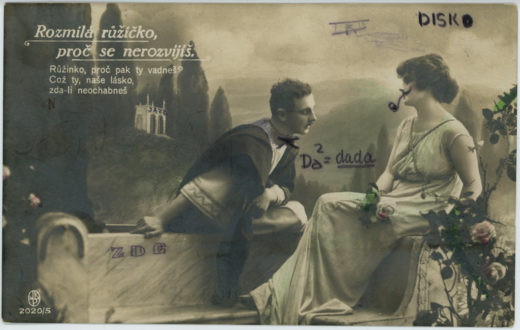Devětsil and Dada: A Poetics of Play in the Interwar Czech Avant-Garde
In 1920, the Czech avant-group Devětsil, led by Karel Teige, put forth a leftist program that embraced a multimedial and transnational approach to art and poetry. This vision was articulated through the group’s homegrown -ism, “Poetism,” which incorporated principles of Constructivism and Dada. While Poetism’s affinities with the former is well-documented, this article introduces more fully Devětsil’s engagement with Dada, in print and through performance and dance. It also positions such manifestations not merely as a reflection of Dada tendencies occurring elsewhere, but also as a useful category for thinking in new ways about some of Devětsil’s own artistic production … Read more





